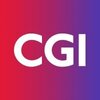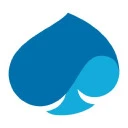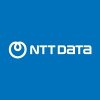Filter interviews by
Capgemini Engineering Interview Questions and Answers
342 Interview questions
OOP features include encapsulation, inheritance, polymorphism, and abstraction, enhancing code modularity and reusability.
Encapsulation: Bundles data and methods, e.g., a class 'Car' with properties like 'speed' and methods like 'accelerate()'.
Inheritance: Allows a class to inherit properties from another, e.g., 'ElectricCar' inherits from 'Car'.
Polymorphism: Enables methods to do different things based on the obj...
This program removes duplicates from an unsorted array of strings using a set for efficiency.
Use a set to track unique strings. Example: Input: ['apple', 'banana', 'apple'], Output: ['apple', 'banana'].
Iterate through the array and add each string to the set. If it's already in the set, skip it.
Convert the set back to a list to return the result. Example: Input: ['cat', 'dog', 'cat'], Output: ['cat', 'dog'].
A robust network design for a mid-sized company with 500 systems ensures efficiency, security, and scalability.
Segment the network into VLANs for better traffic management and security.
Implement a core, distribution, and access layer architecture for scalability.
Use redundant internet connections to ensure high availability.
Deploy firewalls and intrusion detection systems for enhanced security.
Consider a mix of wi...
Basic network topologies include star, bus, ring, mesh, and hybrid, each with unique structures and use cases.
Star topology: All devices connect to a central hub; easy to manage and troubleshoot.
Bus topology: All devices share a single communication line; cost-effective but can lead to collisions.
Ring topology: Each device connects to two others, forming a circle; data travels in one direction, reducing collisions...
Blocking and unblocking security refers to measures that restrict or allow access to sensitive data.
Blocking security prevents unauthorized access to sensitive information, such as financial records.
Unblocking security allows access to previously restricted data after proper authorization.
Example: A bank may block access to customer account details until identity verification is completed.
Unblocking can occur when...
Security setup involves configuring systems to protect data and resources from unauthorized access and threats.
Establish user roles and permissions to control access to sensitive data.
Implement encryption protocols to secure data in transit and at rest.
Regularly update software and systems to patch vulnerabilities.
Conduct security audits and assessments to identify potential risks.
Utilize firewalls and intrusion d...
Reference data is a type of data that defines the permissible values for other data elements in a system.
Reference data provides context for transactional data, such as country codes or currency types.
It is often used to standardize data across different systems, ensuring consistency.
Examples include lists of product categories, customer segments, or geographical regions.
Reference data can be static (like country ...
I am particularly interested in the fields of artificial intelligence and web development, focusing on innovative solutions and user experience.
Artificial Intelligence: I enjoy exploring machine learning algorithms, such as neural networks, to create intelligent applications.
Web Development: I am passionate about building responsive websites using frameworks like React and Angular.
Data Analysis: I find it fascinat...
Change management in Windchill PLM involves controlling product changes efficiently throughout the lifecycle.
Change management ensures that all product changes are documented and approved, reducing errors.
Windchill PLM provides tools for tracking change requests, such as Engineering Change Orders (ECOs).
For example, if a design modification is needed, an ECO can be initiated to assess impacts and approvals.
It inte...
OOPS in Java refers to Object-Oriented Programming, which uses objects and classes to structure software design.
Encapsulation: Bundling data and methods that operate on the data within one unit (e.g., class).
Inheritance: Mechanism where one class can inherit fields and methods from another (e.g., class Dog extends Animal).
Polymorphism: Ability to present the same interface for different underlying forms (e.g., met...
Capgemini Engineering Interview Experiences
385 interviews found
I appeared for an interview in Feb 2025, where I was asked the following questions.
- Q1. Write a program to remove duplicate from unsorted array
- Ans.
This program removes duplicates from an unsorted array of strings using a set for efficiency.
Use a set to track unique strings. Example: Input: ['apple', 'banana', 'apple'], Output: ['apple', 'banana'].
Iterate through the array and add each string to the set. If it's already in the set, skip it.
Convert the set back to a list to return the result. Example: Input: ['cat', 'dog', 'cat'], Output: ['cat', 'dog'].
- Q2. Explain oops features w
- Ans.
OOP features include encapsulation, inheritance, polymorphism, and abstraction, enhancing code modularity and reusability.
Encapsulation: Bundles data and methods, e.g., a class 'Car' with properties like 'speed' and methods like 'accelerate()'.
Inheritance: Allows a class to inherit properties from another, e.g., 'ElectricCar' inherits from 'Car'.
Polymorphism: Enables methods to do different things based on the object, ...
Interview Preparation Tips
I applied via Job Portal and was interviewed in Dec 2024. There were 2 interview rounds.
(2 Questions)
- Q1. What are the different types of changes?
- Ans.
Different types of changes include organizational, technological, process, and strategic changes.
Organizational changes involve restructuring, mergers, or leadership changes.
Technological changes refer to implementing new systems, software, or tools.
Process changes focus on improving workflows, procedures, or policies.
Strategic changes involve shifts in overall goals, vision, or direction.
- Q2. What is a PIR report?
- Ans.
A PIR report is a Post-Implementation Review report that evaluates the success of a change or project after it has been implemented.
PIR reports assess the effectiveness of a change or project in meeting its objectives.
They identify lessons learned and areas for improvement for future changes or projects.
PIR reports often include feedback from stakeholders and key performance indicators (KPIs) to measure success.
Example...
(2 Questions)
- Q1. What is the change management process in ITIL?
- Ans.
The change management process in ITIL involves requesting, assessing, authorizing, implementing, and reviewing changes to IT services.
Requesting changes: Users or stakeholders submit change requests for IT services.
Assessing changes: Change managers evaluate the potential impact and risks of proposed changes.
Authorizing changes: Changes are approved or rejected based on their impact and alignment with business goals.
Im...
- Q2. How flexible are you with shift schedules?
- Ans.
I am very flexible with shift schedules and can adapt to different timings as needed.
I have experience working various shifts in my previous roles.
I am willing to adjust my schedule to meet the needs of the team or project.
I understand the importance of being available during critical times, even if it means working non-traditional hours.
(3 Questions)
- Q1. What is the difference between agent and waterfall
- Ans.
Agile is an iterative approach to project management, while waterfall is a linear approach.
Agile is iterative and allows for flexibility and changes throughout the project.
Waterfall is a linear approach where each phase must be completed before moving on to the next.
Agile focuses on delivering working software in short iterations, while waterfall follows a sequential process from requirements to testing and deployment.
- Q2. How you handle the agile waterfall project
- Ans.
I handle agile waterfall projects by blending the flexibility of agile with the structure of waterfall.
I create a hybrid approach that combines the iterative nature of agile with the sequential phases of waterfall.
I prioritize requirements and plan sprints while also defining clear milestones and deliverables.
I ensure constant communication and collaboration among team members to adapt to changes while staying on track...
- Q3. Share any waterfall project which you have done
- Ans.
Managed a large-scale construction project using the waterfall methodology
Developed a detailed project plan outlining all tasks and dependencies
Assigned specific roles and responsibilities to team members
Implemented a strict change control process to minimize scope creep
Conducted regular status meetings to track progress and address any issues
Completed the project on time and within budget
(2 Questions)
- Q1. Keep a good study on the data centres and the cloud migration
- Q2. Understand how the data centre setup should develop
- Ans.
Data centre setup should evolve with advancements in technology and increasing demands for storage and processing power.
Regularly assess and upgrade hardware to ensure optimal performance
Implement virtualization to maximize resource utilization
Utilize cloud services for scalability and flexibility
Enhance security measures to protect sensitive data
Consider energy efficiency and sustainability in design
I applied via Approached by Company and was interviewed in Dec 2024. There were 4 interview rounds.
Java, DSA Coding Questions, Array, LL
(2 Questions)
- Q1. Java, Java 8, SpringBoot, AWS, Kafka, Microservices, Design Patterns, SOLID
- Q2. Collection framework
(1 Question)
- Q1. General Managerial Interview
(1 Question)
- Q1. HR Discussion , Salary Discussion Company Policy etc
Interview Preparation Tips
(2 Questions)
- Q1. What is closure
- Ans.
A closure is a function that has access to its own scope, as well as the scope in which it was defined.
A closure allows a function to access variables from an outer function even after the outer function has finished executing.
Closures are commonly used in event handlers, callbacks, and in functional programming.
Example: const outerFunction = () => { const outerVar = 'I am outer'; return () => { console.log(outer...
- Q2. What is difference between state and props
- Ans.
State is mutable and managed within a component, while props are immutable and passed from parent to child components.
State is managed within a component and can be changed using setState() method
Props are passed from parent to child components and cannot be changed within the child component
State is used for internal component data management, while props are used for passing data from parent to child components
Exampl...
(2 Questions)
- Q1. What is difference between display block and inline
- Ans.
display block takes up full width and starts on a new line, while display inline only takes up as much width as necessary and does not start on a new line.
display block elements start on a new line and take up the full width available, while display inline elements do not start on a new line and only take up as much width as necessary
display block elements can have margin and padding applied on all four sides, while di...
- Q2. What is promise
- Ans.
A promise is an object representing the eventual completion or failure of an asynchronous operation.
Promises are used to handle asynchronous operations in JavaScript.
A promise can be in one of three states: pending, fulfilled, or rejected.
Promises can be chained using .then() to handle success and .catch() to handle errors.
Example: Fetching data from an API returns a promise that resolves with the data or rejects with ...
Good morning raise a simple terms of the following sentence to be ready to to to to to to to to
(2 Questions)
- Q1. The following sentence to the sentence to be
- Q2. They you are not reachable at the same thing
I applied via Naukri.com and was interviewed in Nov 2024. There were 2 interview rounds.
(2 Questions)
- Q1. Can we interchange service and controller annotations?
- Ans.
No, service and controller annotations cannot be interchanged.
Service annotations are used to define a class as a service component, while controller annotations are used to define a class as a controller component.
Service annotations are typically used for business logic and data manipulation, while controller annotations are used for handling HTTP requests and responses.
Interchanging these annotations can lead to une...
- Q2. Sql query join
- Ans.
SQL joins combine rows from two or more tables based on related columns, enabling complex queries and data retrieval.
INNER JOIN: Returns records with matching values in both tables. Example: SELECT * FROM A INNER JOIN B ON A.id = B.id;
LEFT JOIN: Returns all records from the left table and matched records from the right table. Example: SELECT * FROM A LEFT JOIN B ON A.id = B.id;
RIGHT JOIN: Returns all records from the r...
(1 Question)
- Q1. Why want to switch?
- Ans.
Seeking new challenges and opportunities for growth in a different environment.
Desire for new challenges and opportunities
Seeking professional growth and development
Interested in exploring different work environment
Looking for a change in career path
I applied via Naukri.com and was interviewed in Nov 2024. There was 1 interview round.
(2 Questions)
- Q1. Hashmap internal working
- Ans.
HashMap in Java uses an array of buckets and linked lists to store key-value pairs efficiently.
1. Structure: HashMap uses an array of nodes (buckets) to store entries.
2. Hashing: Keys are hashed to determine their bucket index.
3. Collision Handling: If two keys hash to the same index, a linked list is used to store multiple entries.
4. Load Factor: Default load factor is 0.75, balancing space and time efficiency.
5. Resi...
- Q2. Default methods and multiple abstraction, asynchronous calls in java
MCQ’s only, DSA and other MCQ 1 hour
(2 Questions)
- Q1. Project related questions
- Ans.
Discussing project experiences showcases skills, teamwork, and problem-solving abilities in software development.
Describe the project goals and objectives, e.g., developing a mobile app for health tracking.
Explain your role and contributions, such as coding, testing, or leading a team.
Highlight challenges faced and how you overcame them, like debugging complex issues.
Mention technologies used, e.g., React for frontend ...
- Q2. Coding problem in any basic programming language
(2 Questions)
- Q1. General HR and salary discussions
- Q2. Location and other related queries
I applied via Campus Placement and was interviewed in Oct 2024. There were 2 interview rounds.
Easy and gaming round also included which has more weightage
(2 Questions)
- Q1. Tell me about yourself
- Ans.
I am a passionate engineer with a strong background in software development and a keen interest in innovative technology solutions.
Graduated with a degree in Computer Engineering from XYZ University, where I developed a solid foundation in programming and systems design.
Interned at ABC Corp, where I contributed to a team project that improved application performance by 30% through code optimization.
Proficient in langua...
- Q2. What four pillar of oops
- Ans.
The four pillars of OOP are encapsulation, inheritance, polymorphism, and abstraction.
Encapsulation: Bundling data and methods that operate on the data into a single unit.
Inheritance: Allowing a class to inherit properties and behavior from another class.
Polymorphism: The ability for objects of different classes to respond to the same message.
Abstraction: Hiding the complex implementation details and showing only the n...
Top trending discussions






Capgemini Engineering Interview FAQs
The duration of Capgemini Engineering interview process can vary, but typically it takes about less than 2 weeks to complete.
Tell us how to improve this page.
Capgemini Engineering Interviews By Designations
- Capgemini Engineering Software Engineer Interview Questions
- Capgemini Engineering Analyst Interview Questions
- Capgemini Engineering Software Developer Interview Questions
- Capgemini Engineering Senior Software Engineer Interview Questions
- Capgemini Engineering Consultant Interview Questions
- Capgemini Engineering Senior Consultant Interview Questions
- Capgemini Engineering Associate Engineer Interview Questions
- Capgemini Engineering Associate Consultant Interview Questions
- Show more
Interview Questions for Popular Designations
- Software Engineer Interview Questions
- Analyst Interview Questions
- Software Developer Interview Questions
- Senior Software Engineer Interview Questions
- Consultant Interview Questions
- Senior Consultant Interview Questions
- Associate Engineer Interview Questions
- Associate Consultant Interview Questions
- Show more
Overall Interview Experience Rating
based on 285 interview experiences
Difficulty level
Duration
Explore Interview Questions and Answers for Top Skills at Capgemini Engineering
Interview Questions from Similar Companies
Capgemini Engineering Reviews and Ratings
based on 2.3k reviews
Rating in categories
1-14 Yrs
Not Disclosed
2-11 Yrs
Not Disclosed
1-7 Yrs
Not Disclosed
|
Senior Software Engineer
1.8k
salaries
| ₹4.9 L/yr - ₹21.8 L/yr |
|
Technical Lead
1.3k
salaries
| ₹14.7 L/yr - ₹24 L/yr |
|
Software Engineer
1.2k
salaries
| ₹4.5 L/yr - ₹11 L/yr |
|
Senior Consultant
451
salaries
| ₹14.2 L/yr - ₹24 L/yr |
|
Network Engineer
395
salaries
| ₹4 L/yr - ₹8.5 L/yr |

Genpact

DXC Technology

Virtusa Consulting Services

CGI Group
- Home >
- Interviews >
- Capgemini Engineering Interview Questions
















